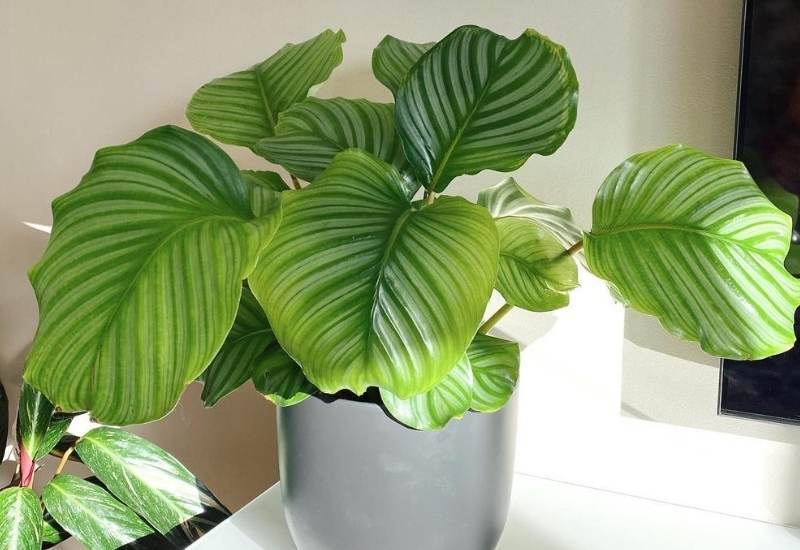
Hailing from the South American jungle, this dark green beauty looks like it belongs in a candy shop with its waxy, pinstriped leaves.
Calathea orbifolia is a popular indoor plant due to its striking appearance, air-purifying abilities, and non-toxicity for households with children and pets.
Like other Calatheas it is commonly known as a ‘prayer plant’, folding its leaves together at night and opening them to the sun in the morning in a ritualistic, prayer-like process.
A beautiful, larger member of the Calatheas that is native to Bolivia, the orbifolia is known for its silver striped leaves that are iridescent and highly animated.
The wide leaves are textured and oval shaped, and fan out from the plant making any room feel like the heart of the rainforest.
But as a tropical plant, it is a little fussy and has quite a few specific needs that need to be managed to keep it healthy and lush.
It has recently been re-classified as Goeppertia orbifolia, but is still widely known as a Calathea and in this article it will continue to be referred to as such.
If you use the following guide to monitor its care, propagation, and troubleshoot any problems, then you shouldn’t have any problem keeping this elegant plant in great health.
Quick Facts Table
Scientific Name | Calathea orbifolia or Goeppertia orbifolia |
Horticultural Classification | Family: Marantaceae, Genus: Calathea |
Common name | Prayer Plant |
Native region | Tropics of the Americas |
Average size | 100cm/3.2ft high, leaves: 30cm/1ft wide. |
Sunlight needs | Moderate and indirect |
Temperature needs | 15-21℃ (~60-70℉) |
Water needs | Soil must be kept moist but not soggy. |
Soil needs | Ideal pH is around 6.5, slightly acidic well draining soil |
Bloom time | Summer (note that they do not usually bloom indoors) |
Flowers | White/purple |
Calathea Orbifolia Plant Overview
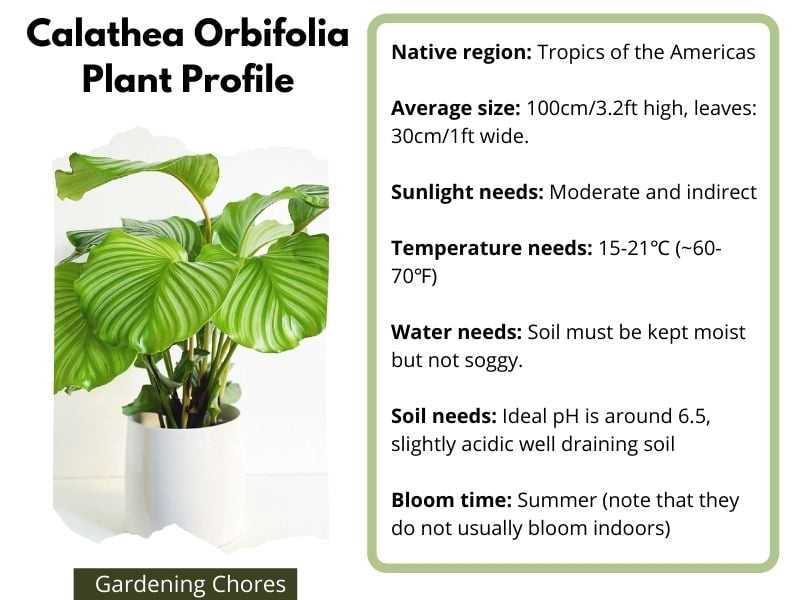
If kept in ideal conditions, within the first year the Calathea orbifolia can reach 2ft (61cm) tall, making it a moderately fast growing houseplant. Maximum height is usually 3.2ft (100cm) and the spread can be up to 2ft wide due to the wide leaves and lush foliage (VanZile, 2021).
The leaves are very dynamic and responsive to light. It is a monocot meaning that it belongs to the same group as most grasses and has a fibrous root structure underground.
The orbifolia has white flowers but it is not common for them to bloom indoors, and the large leaves make up the foliage year round. If you are in a tropical region it can grow outdoors most of the year, but in temperate climates it needs to stay indoors as it cannot tolerate cold nighttime temperatures.
How To Care For The Calathea Orbifolia
Above are the main requirements for proper Calathea orbifolia, now let’s get right into our best tips for keeping them happy and healthy, including how to water orchids, how to propagate them, and what potting mix to use.
1: Place Your Plat In Medium Indirect Light
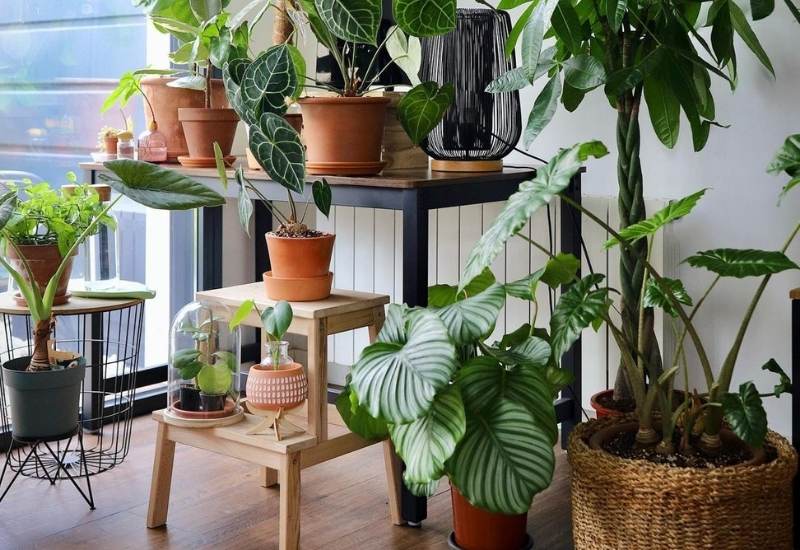
The basic idea with caring for your Calathea orbifolia is to simulate its native environment (a good mindset to have with most plants!) Since it would typically grow on the shadowy jungle floor, Calatheas do not love direct sunlight, and it can actually do a lot more harm than good by burning the leaves.
Place it in a bright room that gets indirect light; not directly in the shade but not under a beam of sunlight either.
If you can comfortably read in the chosen spot then that is a good indicator of whether it is bright enough. Please mention how many hours of sunlight it need.
2: Maintain Indoor Temperatures Above 70 Degrees
Although it may not love direct sunlight, it certainly loves warmth. It can tolerate anything in the range mentioned above but the best temperatures for this plant are around 20 degrees celsius or 70 degrees fahrenheit, and it doesn’t like sudden changes in temperature (Carter, 2020).
2: Maintain Higher Humidity Around Your Plant
Humidity is a very important factor to consider if you are in a dry climate, especially in the winter when indoor heating can significantly dry out your house.
Ideally the humidity levels should be at about 54%, which you can measure with a hygrometer if you want to really micromanage your growing conditions.
Greenhouses are a great spot for these guys for this reason, but if you live in a city apartment, consider keeping it in your bathroom or your kitchen where humidity is usually the highest.
You can also mist the plant with a spray bottle, put the pot on a tray of pebbles, or place it together with a group of other plants to increase the humidity.
3: Should Be Planted In Rich Soil
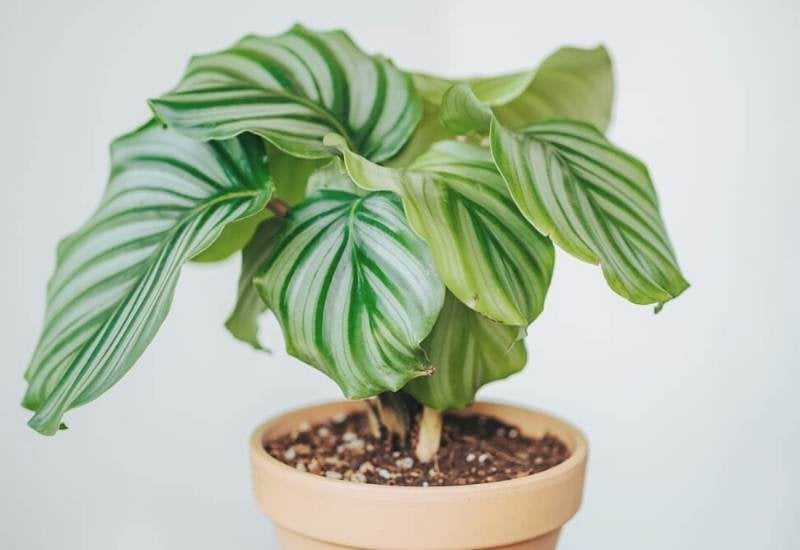
The aim of the game here is to recreate the Calathea’s beloved jungle soil, which is very rich in organic matter. Go for a potting soil that is peaty with a slightly acidic pH of around 6.5 (VanZile, 2021).
You need the soil to stay moist but ensure the pot has good drainage so that the roots aren’t logged with water. Orchid bark, pumice and perlite are all helpful for improving drainage in the soil, but keep in mind that orchid bark breaks down over time.
4: Feed Your Plant During The Spring And Summer
During the warmer spring and summer months, fertilize your plant every month but no more. These plants are sensitive to being over-fertilized and it can cause the leaf tips to turn brown.
Use a well balanced fertilizer with high levels of Nitrogen, Phosphorus and Potassium.
Compost is ideal as it is typically high in these categories and is naturally sourced. Synthetic fertilizers are high in salts that build up in the soil and can harm the sensitive root system of the Calathea orbifolia.
Water the plant the day before fertilizing so that the nutrients don’t shock and burn the roots.
5: Water lightly but a lot
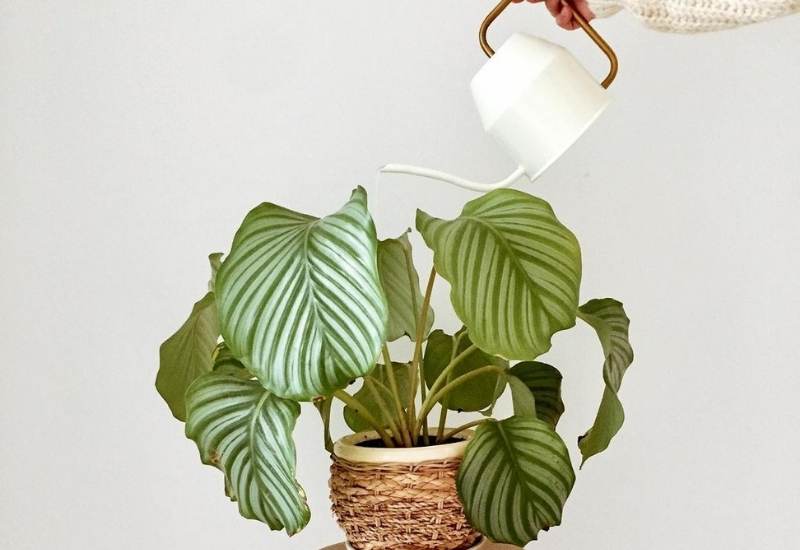
A very important factor to consider with the Calathea orbifolia is how often and how much you water it. As it is native to tropical rainforests, it requires constant moisture and decently humid conditions, but like other potted plants it is very vulnerable to developing root rot.
This typically occurs when there is poor drainage in the soil or the pot has too few or blocked drainage holes, so the roots end up sitting in boggy soil.
When constantly submerged in these conditions the roots will quickly deteriorate and rot, and the visible plant will begin to die. Unfortunately, it is very difficult to remedy and completely save a plant once root rot has set in.
The best way to avoid this but still ensure the Calathea has enough moisture is to water very frequently but with small amounts each time.
To do this evenly, and also improve the humidity, it can be a good idea to use a spray bottle to mist the soil and leaves. Use a damp cloth to wipe leaves if they are very dusty.
Beware Of Your Water
Another thing to consider with the water needs of this plant is that it is highly sensitive to minerals and salts that are often found in tap water. If discolouration begins to occur on the surface of the leaves, you may want to think about changing your water source.
Rainwater is the natural source for plants, and you can be sure it has no added minerals like chlorine (and it’s cheaper than a water filter). Set up a little rain water collector on your balcony or patio and use it for all your indoor plants!
How And When To Prune Calathea orbifolia
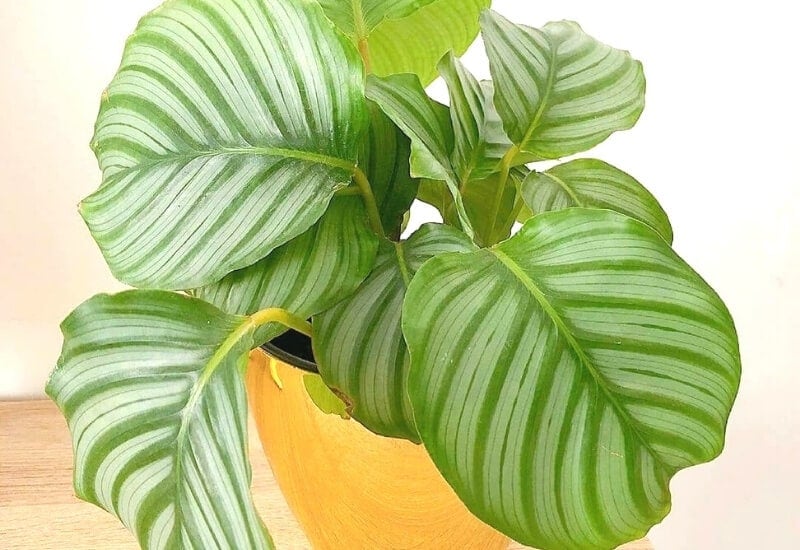
This Calathea is easily stressed and does not like being disturbed very often. Keep this in mind when pruning, propagating, or re-potting it- none of which need to be done frequently so resist the temptation and keep your hands off!
The pruning process of Calathea orbifolia is relatively simple, just do not do any pruning right after potting or re-potting when the plant is most stressed. Here is the basic process:
How To Propagate Calathea Orbifolia
Propagating the orbifolia is unfortunately not as simple as pruning (which might be why they aren’t all that easy to find), and requires division at the root level.
Stem cuttings are very difficult to do and often unsuccessful, and seeds are hard to collect since they are not known to bloom in indoor environments.
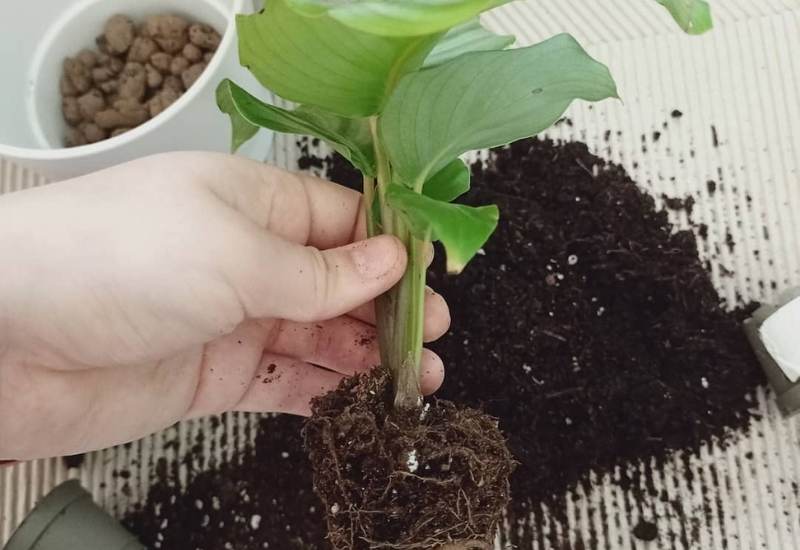
Here how propagate your orbifolia through division:
Pests and Diseases
Due to frequently moist soil, fungus and powdery mildew can both be problems with this plant. Spider mites, aphids, and thrips can also invade and quickly spread to other indoor plants unless promptly dealt with.
Often these pests are very small and can only be detected by signs such as small webs around the stems or discolored patches on the underside of leaves that are a yellowy brown color.
There are a number of ways to treat these fungi and pests, and one popular technique is using a neem oil spray on the leaves and soil, which is good for both critters and mildew and is naturally derived. Similarly, diatomaceous earth mixed into the soil disrupts the life cycle of pests and is beneficial to soil health.
Since some of these pests lay eggs in the top layer of soil, make sure to replace the top couple of inches when treating them.
Many plant growers will use a small amount of dish soap mixed with warm water as a solution for both powdery mildew and mites, but use with caution as this concoction can strip the plant of natural waxes if used too liberally!
Frequently Asked Questions
I don’t have a humidifier, how do I keep my Calathea in a humid environment?
Misting is your best friend. Placing pebbles in a tray underneath your plant can also increase evaporation and create local humidity.
Placing it with other plants in a group creates more humidity, as does keeping it in a bathroom or kitchen where there is much more moisture. There are even small, self-standing greenhouses you can buy online if your house is particularly dry.
Are all Calathea species the same in terms of care?
There are over 300 species in the Calathea genus, but they are tropical and require similar water and sunlight needs. There may be slight variations on the best soil conditions and pH, and it is a good idea to research particular needs and common pests as some things are species-specific.
The good news is that none of them are toxic to humans or animals if ingested (but they might give you a bit of a stomach ache!)
How often should I mist my Calathea orbifolia?
This varies on the type of climate you live in and how dry your house is, but a good starting point is every few days or around twice a week. If you are noticing the soil is drying out quickly you can mist every other day.
Help! My Calathea’s leaves are turning brown/curling at the tips, what do I do?
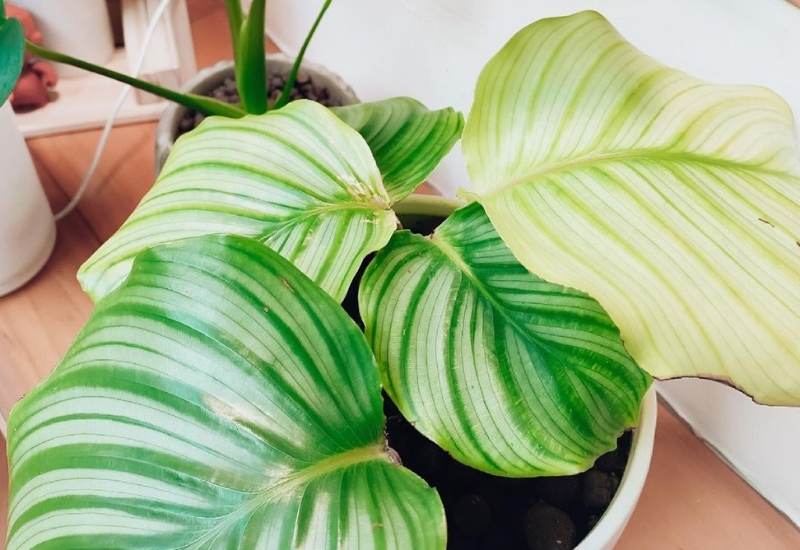
Browning or curling leaf tips on Calathea orbifolia are typically a symptom of many issues, so you might have to do some investigating through the process of elimination. Underwatering or insufficient humidity is often the cause, so check with your finger how damp the soil is and mist more frequently if needed.
Leaf curling can also be caused by too cool temperatures, so try increasing your thermostat by a degree or two.
Overfertilization is another perpetrator for brown leaf tips, so if you are frequently adding fertilizer lay off for a while.
If the issue still persists, it could be the quality of the water you are using so try an unfiltered and unchlorinated water source.
Is my Calathea moving or am I going crazy?
No you’re not! Calatheas move throughout the day in response to light, and fold their leaves together at night. It is a very animated plant so don’t be alarmed if something seems different when you re-enter the room it’s in.
My Calathea’s leaves aren’t folding at night, what is wrong with it?
If the leaves become less animated it may be because they need more water.
When should I re-pot my Calathea?
As mentioned above, Calatheas do not like to be repotted and it can actually do more harm than good. Once a year is fine while it is growing as long as there are no specific issues that require a new pot. Once it has reached maximum size you shouldn’t need to repot.
What size pot should I use?
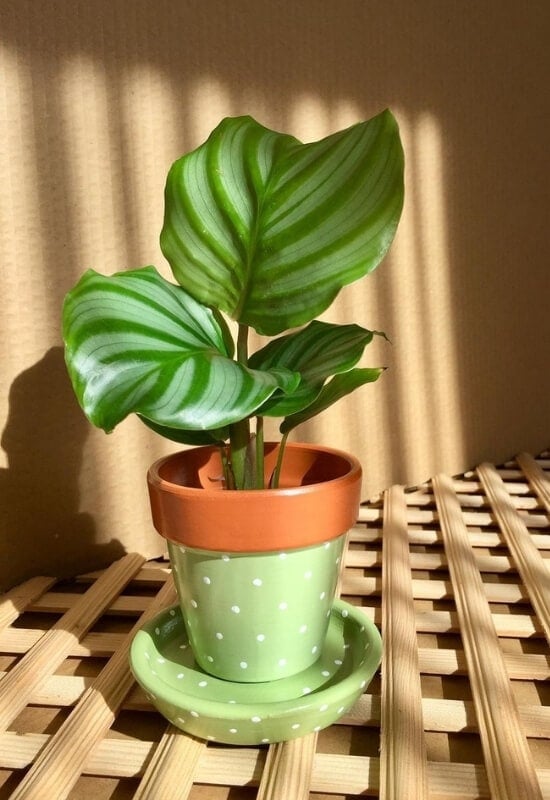
For Calathea orbifolia 8-10 inch pots are plenty large, but you will want to start smaller with newly propagated plants and pot up after a year and maybe again a year later. As mentioned earlier these guys do not like to be disturbed so don’t pot more than needed.
What kind of pot should I use?
Plastic or ceramic might be the best options for Calathea orbifolia, as terra-cotta pots are very porous and dry out the soil inside. Make sure it has good drainage holes at the bottom.
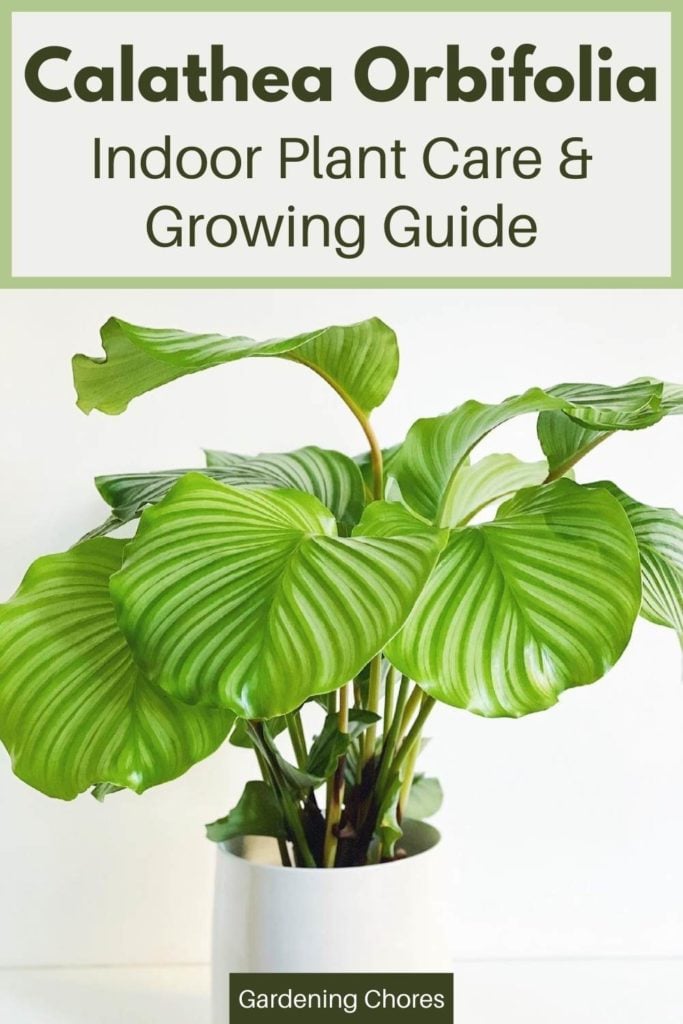

Written By
Amber Noyes
Amber Noyes was born and raised in a suburban California town, San Mateo. She holds a master’s degree in horticulture from the University of California as well as a BS in Biology from the University of San Francisco. With experience working on an organic farm, water conservation research, farmers’ markets, and plant nursery, she understands what makes plants thrive and how we can better understand the connection between microclimate and plant health. When she’s not on the land, Amber loves informing people of new ideas/things related to gardening, especially organic gardening, houseplants, and growing plants in a small space.

It is remarkable, it is very valuable phrase